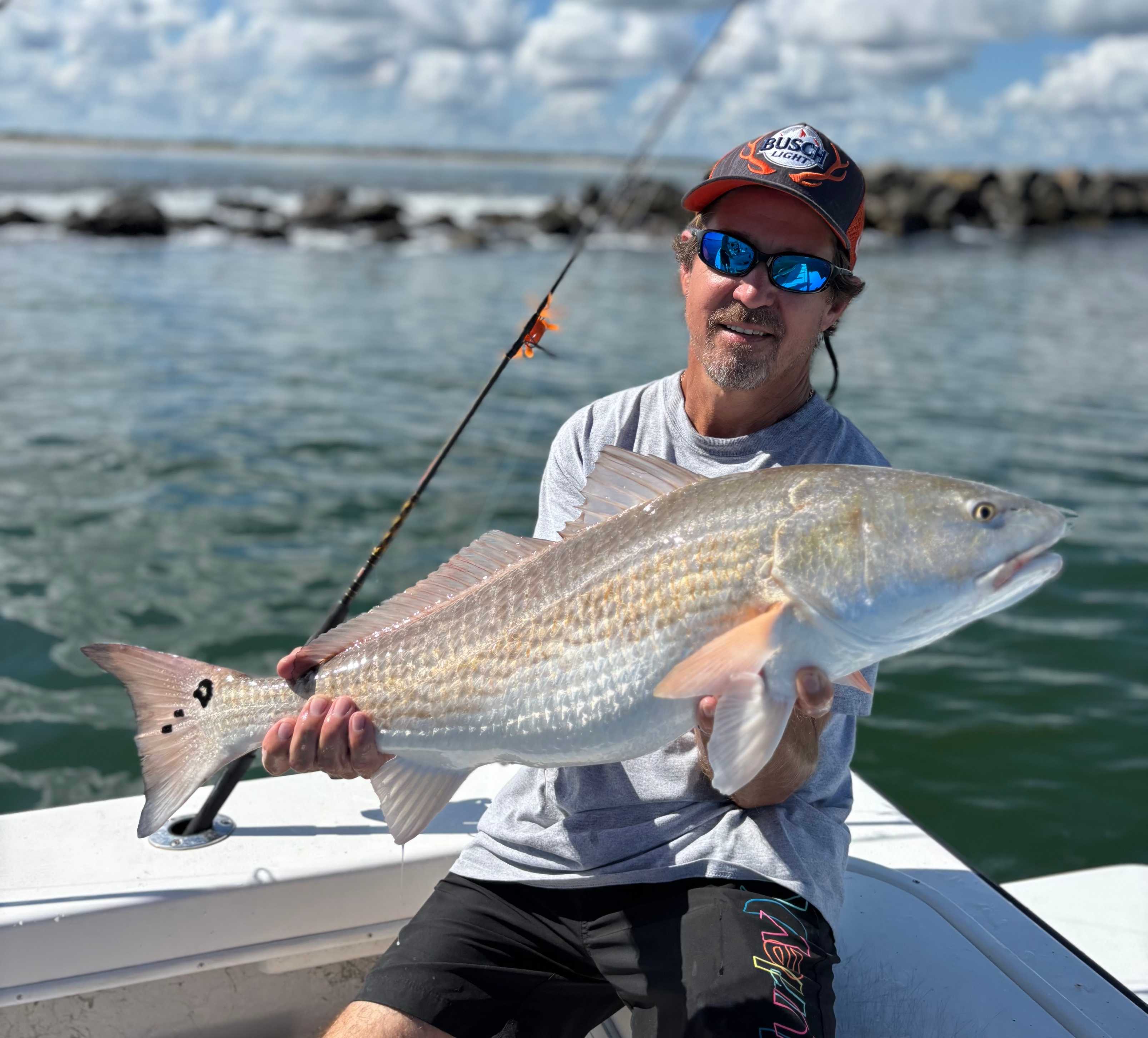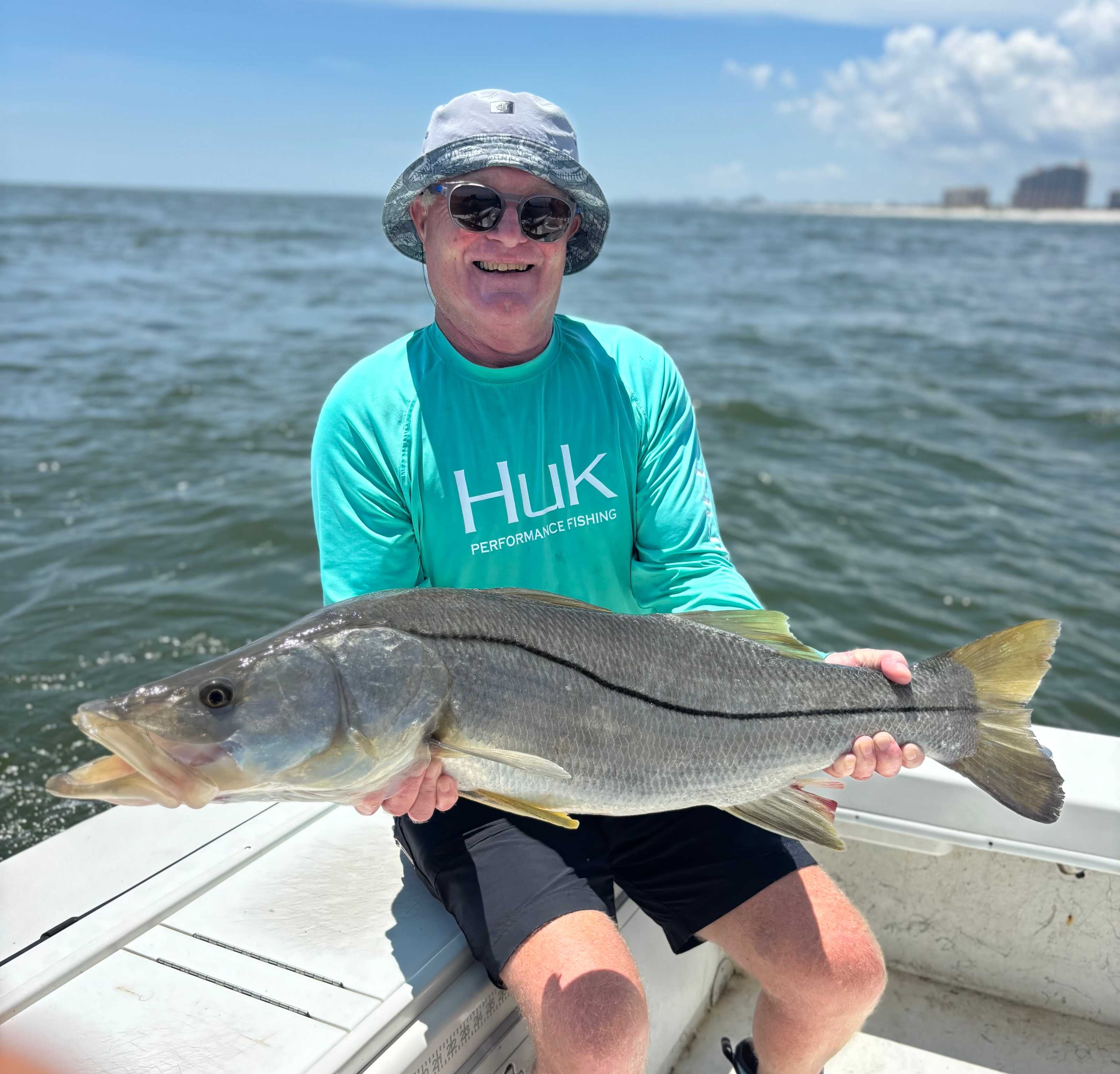Inshore Fall Fishing Between Daytona Beach & New Smyrna Beach
Fall fishing in the waters between Daytona Beach and New Smyrna Beach give anglers of all levels a unique opportunity to enjoy the cooler weather and active fish. This guide from Tuna Tail Charters will cover everything you need to know for a successful inshore fishing trip during the fall season.
Types of Fish Available in the Fall Season
During the fall, the inshore waters are teeming with a variety of fish, including Red Drum, Spotted Seatrout, Flounder, and Black Drum. These species are known for their fight and taste, making them popular targets for anglers. The Red Drum, often sought after for its strong fight, can be found in grassy marshes and near oyster bars, providing thrilling action for anglers. Spotted Seatrout, another favorite, thrives in slightly deeper waters, especially around grass flats and drop-offs where they can ambush prey. Flounder, the masters of camouflage, lie in wait on sandy bottoms for an unsuspecting meal, offering a different kind of fishing challenge. Black Drum, the larger cousin of the Red Drum, prefers structured environments like bridge pilings and can be targeted for their size and strength.
Each of these species has unique behaviors and habitats, making the fall fishing season a diverse and exciting time for anglers. The cooler temperatures bring these fish into shallower waters, making them more accessible and eager to feed in preparation for winter. Anglers targeting these species during the fall will find a rewarding mix of challenges and opportunities. Understanding the habits and preferred environments of each fish increases the chances of a successful catch, making knowledge of local waters an invaluable tool for any angler.
- Sheepshead and Mangrove Snapper also become more prevalent in the fall, offering additional targets for anglers.
- Look for Red Drum around spoil islands and shallow bays with grassy bottoms.
- Spotted Seatrout are particularly attracted to areas with submerged vegetation and can often be found in deeper holes during cooler days.
- Night fishing can be especially productive for Flounder as they move into shallower waters to feed.
Best Fishing Spots
The Halifax River, Mosquito Lagoon, and the waters around Ponce de Leon Inlet are prime spots for inshore fishing. These areas offer a mix of shallow flats, mangroves, and deeper channels, providing ideal habitats for fall fish species. The Halifax River, with its extensive mangrove edges and dock structures, offers excellent opportunities for Red Drum and Snook, especially near inlets where water flow brings in baitfish. Mosquito Lagoon is renowned for its clear shallow waters, making it a perfect spot for sight fishing Spotted Seatrout and Red Drum. The area around Ponce de Leon Inlet, with its mix of fresh and saltwater, attracts a variety of species, including Flounder and Tarpon, making it a versatile fishing destination.
These locations not only provide rich fishing grounds but also stunning natural beauty, enhancing the overall fishing experience. Seasonal changes in these areas bring different species into focus, with fall being particularly rewarding for anglers looking to target the species mentioned. Access to these spots can vary, with some areas easily reachable by boat and others more suited to kayak or wade fishing. Local charters and guides can offer invaluable advice and access to the best fishing locations, tailored to the preferences and skill levels of visiting anglers.
- Tiger Bay State Forest, along the St. Johns River, can also be a productive area for freshwater species transitioning during the fall.
- The Tomoka Basin is another excellent location for targeting Red Drum and Trout with its mix of saltwater and brackish environments.
- Consider exploring the backcountry waters near New Smyrna Beach for a quieter, less crowded fishing experience.
Recommended Fishing Techniques & Bait
Live bait such as shrimp, mullet, and pinfish are highly effective in the fall. Techniques like drift fishing, bottom fishing, and using popping corks can yield good results. For artificial lures, soft plastics and spoons can be very effective. Drift fishing allows anglers to cover a large area and present baits naturally with the current, ideal for targeting Spotted Seatrout and Red Drum. Bottom fishing, particularly around structures such as bridges and docks, can be productive for Black Drum and Flounder. Popping corks, used to mimic the sound of feeding fish, can attract attention and trigger strikes from predatory species.
Artificial lures offer versatility and the ability to quickly switch tactics. Soft plastics, mimicking baitfish or shrimp, can be used in a variety of conditions and depths, making them a staple in any inshore angler's tackle box. Spoons, with their erratic reflection and movement, are particularly effective for aggressive species like Bluefish and Jack Crevalle that may also be present in the fall. Experimenting with different techniques and baits is key to a successful day on the water, as conditions and fish preferences can change rapidly.
- Fly fishing can be highly effective during the fall, especially for Spotted Seatrout in shallow waters.
- Using topwater lures during the early morning or late evening can lead to explosive strikes from predatory fish.
- Consider using scented soft plastics to increase your chances of attracting fish in murkier waters.
Weather Conditions & Their Effects
Fall weather can be unpredictable, with occasional storms and cooler temperatures. Fish tend to feed more aggressively before a cold front, so paying attention to weather forecasts can help you plan your trips for the most active feeding times. The approach of a cold front can stimulate fish to feed heavily, anticipating the cooler temperatures that slow their metabolism. This period can offer some of the best fishing of the season, with fish more concentrated and active. However, safety should always be a priority, and anglers should be prepared for sudden weather changes by monitoring forecasts and having appropriate safety gear on board.
After a cold front passes, fish may become lethargic and less willing to bite, requiring a change in tactics. Slowing down your presentation and using smaller baits can entice bites from fish in a more subdued feeding mood. Additionally, sunny days following a cold front can warm shallow areas quickly, drawing fish back into these spots to feed. Understanding how weather affects fish behavior and adjusting your strategies accordingly can greatly enhance your fishing success during the fall season.
- Wind direction can significantly affect water clarity and movement, influencing where fish may be located.
- Barometric pressure changes before and after storms can also impact fish behavior, with many species feeding more actively as pressure drops.
Equipment & Gear Recommendations
A medium-light spinning rod and reel combo is versatile enough for most inshore species. Braided line with a fluorocarbon leader is recommended for its sensitivity and strength. Don't forget a good selection of hooks, weights, and lures suited to the species you're targeting. The right equipment can make a significant difference in your ability to feel bites, set hooks, and land fish. A medium-light rod offers the sensitivity needed for detecting subtle bites, while still having enough backbone to handle larger fish. Braided line, with its lack of stretch, provides immediate feedback, allowing for quicker hook sets.
When selecting lures and bait, consider the conditions and target species. A well-stocked tackle box should include a variety of sizes and colors to match local baitfish and water conditions. For example, darker lures may be more effective on overcast days, while brighter colors can be better in clear conditions. Additionally, having a range of hook sizes and weights ensures you can adjust your setup as needed, whether fishing deep channels or shallow flats. Proper gear maintenance, such as regularly checking lines for wear and keeping reels clean, will also help ensure your equipment is ready when the fish are biting.
- Waterproof and corrosion-resistant gear is crucial for saltwater fishing to withstand the harsh marine environment.
- A quality pair of polarized sunglasses can help you spot fish and structure beneath the water's surface, crucial for sight fishing.
Comparison of Fishing Prospects During Fall with Other Seasons
Fall offers some advantages over other seasons, such as less crowded waterways and more aggressive fish behavior as they prepare for winter. The variety of fish available is also a plus, with some species being more prevalent or easier to catch in the fall. Compared to the hot summer months, fall temperatures are more comfortable for both anglers and fish, leading to longer, more enjoyable days on the water. The migration patterns of many species bring them closer to shore and into inshore waters, making them more accessible to anglers fishing from boats, piers, and the shoreline.
While spring and summer are traditionally seen as peak fishing seasons, fall should not be overlooked. The changing conditions can offer unique challenges and opportunities not found at other times of the year. For example, the presence of baitfish schools can lead to exciting topwater action as predatory fish feed aggressively. Additionally, the reduced boat traffic of fall can make for a more peaceful and productive fishing experience, allowing anglers to explore spots that may be too busy during the peak season. Understanding the seasonal patterns and behaviors of your target species can help you take full advantage of what fall fishing has to offer.
- Fall is also the season for some migratory species, such as certain types of sharks and tarpon, providing unique fishing opportunities not available during other times of the year.
- Cooler water temperatures can lead to clearer waters, making it easier to spot fish and structure.
Tips from Local Fishermen
- Start early or late in the day when fish are most active.
- Keep an eye on the tide charts; moving water can lead to more productive fishing.
- Be patient and quiet, especially in shallow waters, to avoid spooking the fish.
- Experiment with different baits and lures to see what the fish are biting on any given day.
We're here to provide you with a great fishing experience in the waters between Daytona Beach and New Smyrna Beach. Our local knowledge and expertise mean we're well-equipped to guide you to the best spots and techniques for fall fishing. Whether you're an experienced angler or new to fishing, we're here to help you make the most of your trip.
Ready to hit the water? Contact Tuna Tail Charters to book your fall fishing trip and enjoy some of the best inshore fishing Florida has to offer. Let's make your fishing trip one to remember.
‹ Back







.png)